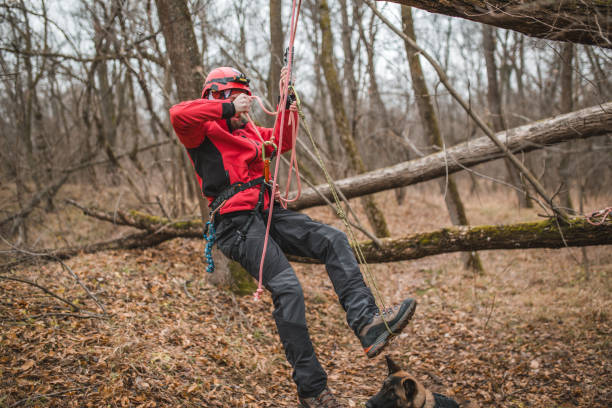In arboriculture, removing a tree is not to be taken lightly. Understanding when, why, and how to remove a tree is crucial for your property’s safety and landscape health.
As we explore the intricacies of tree removal, we will uncover key indicators that signal the necessity of this action, delve into the methodologies of tree removal, and dissect the essential post-removal care required. Stay tuned to unravel the comprehensive guide that will equip you with the knowledge needed to make informed decisions regarding tree removal.
Importance of Tree Removal
Tree removal is a crucial practice that ensures the safety of surrounding structures and individuals. While trees offer various benefits, such as providing shade and enhancing the aesthetic appeal of a property, there are inherent risks associated with having trees near buildings or people.
One of the critical benefits of tree removal is preventing damage to buildings during storms or high winds. Trees with weak or diseased branches can pose a significant risk of falling and causing harm to property or individuals. Additionally, the roots of trees can grow extensively, leading to damage to underground pipes and foundations.
On the other hand, the risks of not removing a tree that poses a threat include property damage, personal injury, and even loss of life. Trees leaning precariously or showing signs of decay should be promptly removed to mitigate these risks. Therefore, regular assessment and timely removal of hazardous trees are essential to maintain a safe environment for everyone involved.
Signs It’s Time to Remove
When assessing whether a tree should be removed, it is crucial to be vigilant for specific signs that indicate the necessity of taking action to prevent potential hazards. Warning signs such as decaying or dead branches, trunk cracks, and tree fungal growth can all point toward a tree being a safety risk.
Decaying branches are prone to breaking off unexpectedly, posing a danger to anything or anyone below. Cracks in the trunk can weaken the tree’s structure, making it susceptible to falling, especially during storms or strong winds. Fungal growth on the tree indicates internal decay, compromising its stability and increasing the likelihood of it toppling over.
Other signs to watch out for include hollowed trunks, leaning trees, and roots causing damage to foundations or underground utilities. Ignoring these warning signs can have profound safety implications, leading to property damage, injuries, or even fatalities. Addressing these signs promptly and considering tree removal to mitigate potential risks is essential.
Tree Removal Process Explained
A systematic and careful process is essential to manage a tree’s removal effectively. Tree removal techniques vary depending on the tree’s size, location, and surrounding structures. The process typically begins with an assessment of the tree to determine the best approach for removal. Tree removal equipment is crucial in safely and efficiently cutting down the tree. Standard tools used for tree removal include chainsaws, ropes, harnesses, and wood chippers.
Once the tree removal technique is determined, the next step is to clear the area around the tree to ensure the safety of both workers and nearby property. This involves trimming branches, securing safety zones, and planning the direction of the tree’s fall. The tree is then carefully cut into sections, starting from the top and working downwards. After the tree is felled, the remaining stump is usually ground down to prevent regrowth and make way for replanting or landscaping. Proper disposal of tree debris is also an essential part of the tree removal process.

